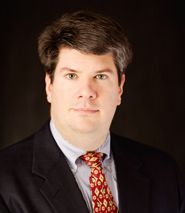Our Partner, Chris Sallay is the Co-Chair of this New York State Bar Association seminar together with Robert A. Glick, Esq; Brand, Glick & Brand, PC. Our Partner Anthony Gair will be speaking at the New York City and Long Island seminars.
PROGRAM DESCRIPTION:
This full-day practical skills program is designed for the newly admitted attorney or the attorney seeking a fundamental but practical overview of handling an auto accident case. A representative case will be reviewed from inception to conclusion from both the plaintiff and defense attorney perspective. The step-by-step practical aspects of the case will be presented by experienced attorneys to demonstrate both the practical aspects of each phase of the litigation as well as the overall thought process behind each phase leading to the ultimate resolution.
AGENDA:
8:30-9:00 REGISTRATION
9:00-9:50 1. INTAKE OF THE PLAINTIFF’S CASE – THE ASSIGNMENT OF THE CASE FOR THE DEFENDANT FROM THE INSURANCE COMPANY
The Plaintiff’s Perspective:
Preliminary Investigation Highlights of the “Typical Case”
The Mechanics of Auto Collisions and Issues Relating to Accident Reconstruction Obtaining Information from the Roadway – Visibility and Traffic Control Devices Soft Tissue Injury Auto Accident Cases – The Serious Injury Threshold Early Settlement The Defendant’s Perspective:
Analyzing Liability, Damages, Threshold, Potential Exposure Knowing Whether to go Down the Road of Settlement or Trial 9:50-10:40 2. NO-FAULT ISSUES AND COVERAGE CONCERNS
No-Fault Coverage – Who is Eligible and Filing Requirements Statutory Requirements for Auto Insurance Coverage in New York The Basics of the Automobile Liability Insurance Policy – Primary and Excess/Umbrella Coverage Uninsured/Under Insured Motorist Coverage Considerations 10:40-10:50 BREAK
10:50-11:40 3. DISCOVERY
Notices for Discovery and Inspection Bills of Particulars The Preliminary Conference The IME 11:40-12:30 4. TAKING A MEANINGFUL DEPOSITION
Preparation is the Key Avoid the Boilerplate, Look up from your Outline and Listen to the Answers All Police and Accident Reports Scene and Vehicle Photos All Medical Records Other Documents – Repair Estimates, Diagrams, etc.
12:30-1:30 LUNCH (on your own)
1:30-2:20 5. MOTION PRACTICE RELATED TO AUTOMOBILE CASES
The Plaintiff’s Summary Judgment Motion – Not just in Rear-end Collision Cases The Serious Injury Threshold Motion – Making and Defeating It 2:20-3:10 6. MEDIATION, ARBITRATION AND SETTLEMENT NEGOTIATIONS
The Mediation/Arbitration Statement Witnesses and Exhibits Remembering the Audience during Discussions 3:10-3:20 BREAK
3:20-4:10 7. ETHICS
Ethics Issues Related to Automobile Litigation Contingent Fee Agreements Advertising and Solicitation The Difficult Client 4:10 ADJOURNMENT
PROGRAM FACULTY:
Overall Planning Chairs
Robert A. Glick, Esq., Brand, Glick & Brand, PC, Garden City, NY Christopher L. Sallay, Esq., Gair, Gair, Conason, Rubinowitz, Bloom, Hershenhorn, Steigman & Mackauf, New York, NY Local Panels (listed in order of appearance)
THURSDAY, MAY 31, 2012
New York City
Chair: Christopher L. Sallay, Esq., Gair, Gair, Conason, Rubinowitz, Bloom, Hershenhorn, Steigman & Mackauf, New York, NY
Panel: Christopher L. Sallay, Esq., Gair, Gair, Conason, Rubinowitz, Bloom, Hershenhorn, Steigman & Mackauf, New York, NY * Robert A. Glick, Esq., Brand, Glick & Brand, PC, Garden City, NY * Nicholas Papain, Esq., Sullivan Papain Block McGrath & Cannavo P.C., New York, NY * Anthony H. Gair, Esq., Gair, Gair, Conason, Rubinowitz, Bloom, Hershenhorn, Steigman & Mackauf, New York, NY * Brian T. Stapleton, Esq., Goldberg Segalla LLP, White Plains, NY
TUESDAY, JUNE 5, 2012
Albany
Chair: John W. Bailey, Esq., Bailey Kelleher & Johnson PC, Albany, NY
Panel: John B. Casey, Esq., Dreyer Boyajian LLP, Albany, NY * Jeanne M. Gonsalves Lloyd, Esq., Friedman, Hirschen & Miller LLP, Albany, NY * Vincent J. DeLeonardis, Esq., Bailey, Kelleher & Johnson, P.C., Albany, NY * P. Baird Joslin, Jr., Esq., O’Connor O’Connor Bresee & First PC, Albany, NY * Mackenzie C. Monaco, Esq., Carter, Conboy, Case, Blackmore, Maloney & Laird, P.C., Albany, NY * Jeffrey K. Anderson, Esq., Anderson, Moschetti & Taffany, PLLC, Latham, NY * John W. Bailey, Esq., Bailey Kelleher & Johnson PC, Albany, NY
WEDNESDAY, JUNE 6, 2012
Long Island (Melville)
Chair: Robert A. Glick, Esq., Brand, Glick & Brand, PC, Garden City, NY
Panel: Robert A. Glick, Esq., Brand, Glick & Brand, PC, Garden City, NY *Christopher L. Sallay, Esq., Gair, Gair, Conason, Rubinowitz, Bloom, Hershenhorn, Steigman & Mackauf, New York, NY * Robert S. Santander, Esq., American European Insurance Group, Inc., New York, NY * Nicholas Papain, Esq., Sullivan Papain Block McGrath & Cannavo P.C., New York, NY * Anthony H. Gair, Esq., Gair, Gair, Conason, Rubinowitz, Bloom, Hershenhorn, Steigman & Mackauf, New York, NY * Brian T. Stapleton, Esq., Goldberg Segalla LLP, White Plains, NY
Syracuse
Chair: Michael P. Kenny, Esq., Kenny & Kenny PLLC, Syracuse, NY
Panel: S. Robert Williams, Esq., Williams and Rudderow, Syracuse, NY * Benjamin C. Rabin, Esq., The Rabin Law Firm, Syracuse, NY * Erin K. Skuce, Esq., Law Offices of Destin C. Santacrose (Employees of Liberty Mutual Group, Inc.), Buffalo, NY * Sandra J. Sabourin, Esq., Goldberg Segalla LLP, Syracuse, NY * Michael P. Kenny, Esq., Kenny & Kenny PLLC, Syracuse, NY * James E. Reid, Esq., Greene & Reid, PLLC, Syracuse, NY * Paul G. Ferrara, Esq., Costello, Cooney & Fearon, PLLC, Syracuse, NY
THURSDAY, JUNE 7, 2012
Buffalo
Chair: Paul J. Callahan, Esq., Law Offices of Sliwa & Lane, Buffalo, NY
Panel: David F. Kluepfel, Esq., Cascone & Kluepfel, LLP, Garden City, NY * Leonard D. Zaccagnino, Esq., Shaw & Shaw P.C., Hamburg, NY * Joseph M. Schnitter, Esq., Brown & Kelly, LLP, Buffalo, NY * Jennifer Stashko Adams, Esq., Adams Hanson Finder Hughes Rego Kaplan & Fsibein, Williamsville, NY * Leonard M. Cascone, Esq., Cascone & Kluepfel, LLP, Garden City, NY * Michael T. Coutu, Esq., Law Offices of Sliwa & Lane, Buffalo, NY * Jeffrey F. Baase, Esq., Rupp, Baase, Pfalzgraf, Cunningham & Coppola, LLC, Buffalo, NY * Peter M. Kooshoian, Esq., Rosenthal, Siegel & Muenkel, LLP, Buffalo, NY
DATES AND LOCATIONS:
THURSDAY, MAY 31, 2012
New York City Affinia Manhattan 371 Seventh Avenue at 31st Street New York, NY 10001-3984 (212) 563-1800
TUESDAY, JUNE 5, 2012
Albany New York State Nurses Association 11 Cornell Road Latham, NY 12110 (518) 782-9400
WEDNESDAY, JUNE 6, 2012
Long Island (Melville)
Melville Marriott Long Island 1350 Old Walt Whitman Road Melville, NY 11747 (631) 423-1600
Syracuse Genesee Grande Hotel 1060 East Genesee Street Syracuse, NY 13210 (315) 476-4212
THURSDAY, JUNE 7, 2012
Buffalo Holiday Inn Amherst 1881 Niagara Falls Blvd.
Amherst, NY 14228 (716) 691-8181
The last day to pre-register online is May 30, 2012. Register online now
 New York Personal Injury Attorneys Blog
New York Personal Injury Attorneys Blog





